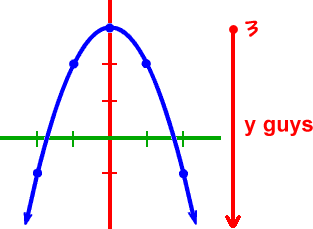Let's look at another one:
Let's find the domain and range of this guy:
![]()
Hmm... Well, I can't THINK of any x's that can't be put into this thing... But, what about the range?
We really need to graph it.
 |
 |
Again, the domain will be all x's (since he spreads out forever). And the range goes from 3 down...
| domain |
| range |
TRY IT:
| From the graph of | , find the | |
| domain and range. | ||